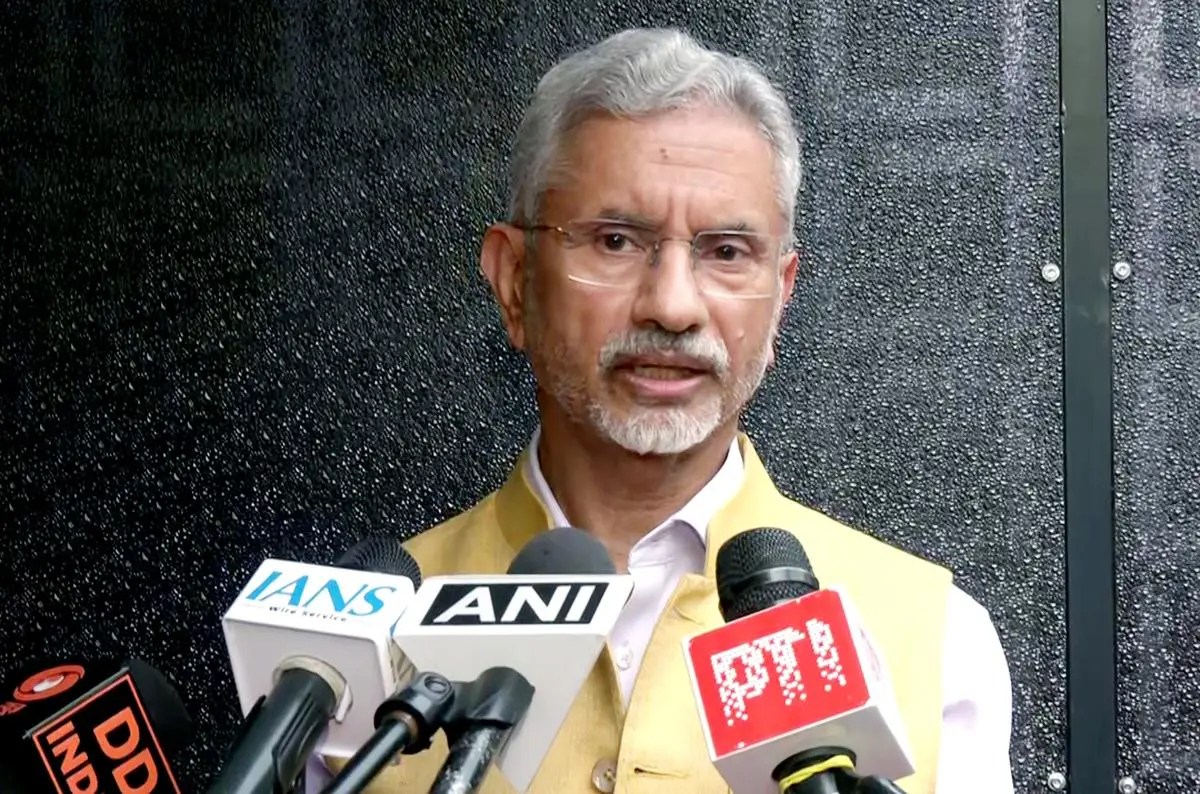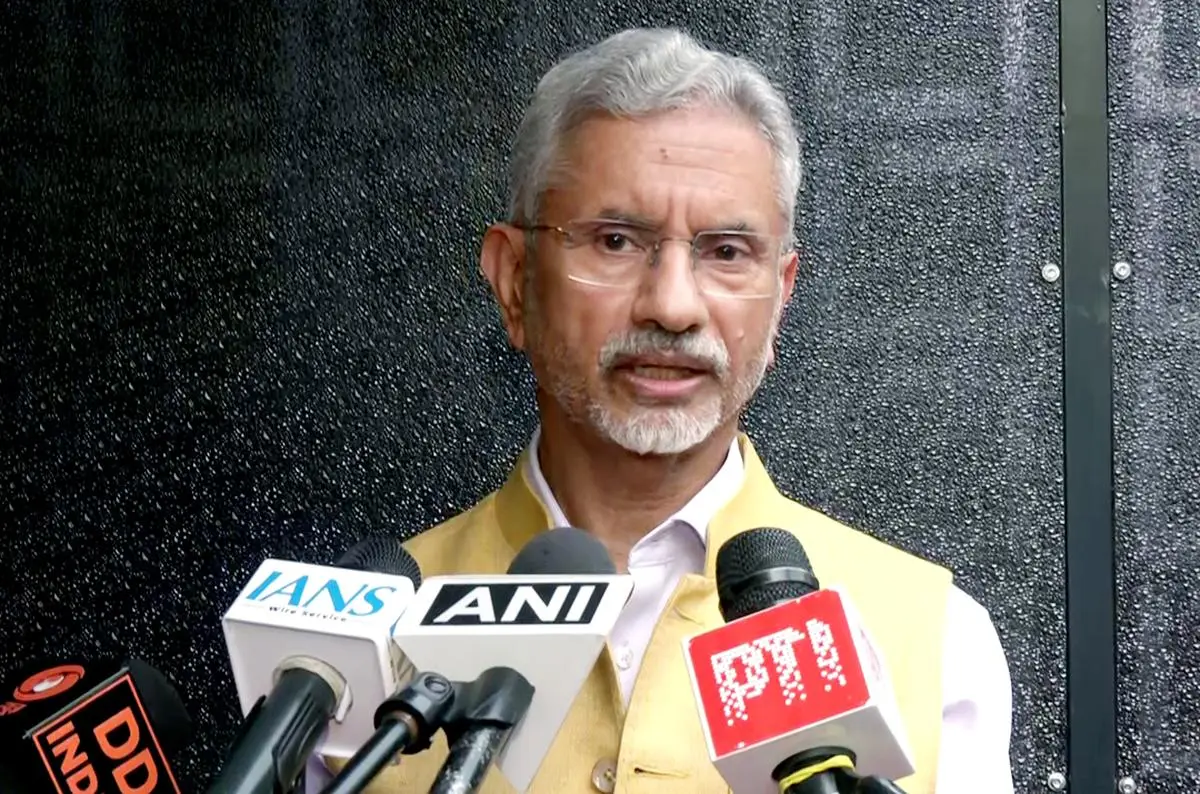
Indian losses in Operation Sindoor, and in Pakistan’s retaliatory Operation Bunyan-un-Marsoos (Wall of Lead or Impenetrable Wall), have not been disclosed by the Central government and, a visibly partisan political calculus indicates, are unlikely to be acknowledged in the foreseeable future. Nevertheless, it is useful to recall that losses to the Air Force in particular were acknowledged by Air Marshal A.K. Bharti, Director General of Air Operations, during the Tri Service Press Conference, when he was questioned about the loss of aircraft. He responded, cryptically: “We are in a combat scenario and losses are part of combat,” though he refused to give further details. The settled consensus internationally is that India did lose aircraft in the initial phase of Operation Sindoor, though the numbers are disputed. It could not have been otherwise.
For a full fortnight, our leadership had been making declarations of intent to wreak vengeance on Pakistan for the Pahalgam terror attack. Union Minister for External Affairs S. Jaishankar has now conceded: “At the start of the operation, we had sent a message to Pakistan saying we are striking at terrorist infrastructure, we are not striking at the military, so the military has the option of standing out and not interfering in this process. They chose not to take that good advice.”
So, the top strategic minds of India thought that Pakistan would simply accept the international and domestic odium of having targets bombed deep inside its territory and do nothing? Or wait on niceties of rules imagined by India? That as long as Indian planes did not cross the Line of Control (LoC) and the International Border (IB), the Pakistani forces would simply sit on their hands or engage in symbolic demonstration, avoiding military targets, even if Indian missiles blasted targets deep inside Pakistani territory?
Lost opportunity
We have become quite used to fixed matches in sports: was this supposed to be some sort of fixed contest that would allow both sides to proclaim cheap victories? Or was it, indeed, vengeance by an angered nation for a terrible terrorist atrocity? If the latter was, in fact, the objective, then India would have waited and struck without warning, at a time when the top terrorist leadership and significant numbers of cadres were present in the various locations targeted.
Also Read | The Valley’s hush is not healing
Instead, ample warning was given to authorities in Pakistan to clean out the prominent terrorist locations, resulting in fairly limited losses for an operation of the scale that we launched with such fanfare. The entire chain of developments put our air assets and our pilots at extraordinary, and unjustifiable, risk, and a price has certainly been paid for this blunder. It is India’s fighting men who must pay for the political leadership’s folly of treating lethal military operations as if they were children’s sport. Is this India’s vaunted strategy of “offensive defence”?
As an aside, it is useful to note here that several defence experts around the world are making technical assumptions based on their understanding of the initial skirmishes between Indian air assets and the Chinese-made Pakistani platforms. It is, however, necessary to emphasise that the Indian planes were essentially sitting ducks, operating on the assumption that Pakistan would not attack as long as Indian aircraft did not cross the LoC/IB—which they did not. Pakistan was also on full alert, with repeated warnings from India and a clear indication that India would only attack terrorist, and not military, targets.
This, as the Minister’s statement now confirms, was officially communicated to Pakistan on the assumption that they would play the game by our rules. They chose not to. Our airmen and air assets paid the price for political folly. This was not an open dog fight. The rival systems are yet to be tested in equal combat. But the notional capabilities of the Chinese platforms would certainly need to be assessed and accommodated in the emerging technologies mounted on Indian and Western platforms.
Reality in Kashmir
It is abundantly clear that the present regime in New Delhi is concerned more with appearances than with reality, and this is not just with respect to Operation Sindoor.
The government would have us believe that the past 11 years have been a period of unprecedented counterterrorism achievement; that it has succeeded spectacularly where all regimes of the past have failed; that the abrogation of Article 370 brought about the transformations necessary to defeat terrorism in Jammu and Kashmir, allowing “zero terrorism” to be established and “normalcy” to be restored; and that the surgical strikes (2016) and the Balakot bombing (2019) were effective deterrents to Pakistani support for Islamist terrorism in Jammu and Kashmir, until their effect wore off, requiring a new and expanded operation to “restore” deterrence.

External Affairs Minister S. Jaishankar speaks to the media in New Delhi on May 15.
| Photo Credit:
ANI
It is crucial that this narrative be examined in view of the facts and data. Such an examination will demonstrate that Operation Sindoor was not a strategic necessity but simply a spectacle for partisan sections of the domestic audience whose passions had, in turn, been intentionally inflamed into a warmongering frenzy of hate in the wake of the Pahalgam attack. It will demonstrate, moreover, that the present government’s entire “Kashmir policy” is ideology-led and based on falsehoods.
History of terrorism in J&K
Terrorism-linked fatalities in Jammu and Kashmir peaked under the Atal Bihari Vajpayee regime (October 13, 1999 to May 21, 2004) at 13,475, including 3,302 civilians and 2,026 security forces (SF) personnel (all data from South Asia Terrorism Portal).
Under Manmohan Singh’s first tenure (May 22, 2004, to May 21, 2009), total fatalities fell by 60 per cent to 5,390, including 1,221 civilians and 843 SF personnel. They fell further to a total of 1,128 during his second tenure—less than 8.34 per cent of the Vajpayee tenure—including 147 civilians and 229 SF personnel.
In a decade, without tampering with Article 370, without collective punishment, without the lawless demolition of homes, without curfews that locked down the population for months at a time, without any significant alteration of the political system or the status of Jammu and Kashmir, the man that some current commentators dismiss as the country’s weakest Prime Minister reduced terrorism by 91.66 per cent over a decade.
Total fatalities under Prime Minister Narendra Modi’s first tenure (May 26, 2014, to May 29, 2019) spiked to 3,588, an increase of 68.56 per cent over Singh’s second tenure. This was despite the “muscularity” of the Modi government’s approach to Jammu and Kashmir, its population, and to Pakistan.
Crucially, this period included the Uri attack (September 18, 2016) and the surgical strikes (September 28, 2016), and the alleged deterrence the latter imposed. But terrorism-linked fatalities actually increased in the following years, with significant increases in all categories.
Thus, where there were 267 fatalities in the 2016 calendar year (14 civilians, 88 SF personnel, and 165 terrorists), the number rose to 357 in 2017 (54 civilians, 83 SF personnel, and 220 terrorists) and to 452 in 2018 (86 civilians, 95 SF personnel, and 271 terrorists).
Also Read | When Indo-Pak tensions go high-tech, it’s the people who pay the price
And yet, the myth of the deterrent value of the surgical strikes is obediently parroted, not only by partisans and paid trolls of the present regime but by many experts and commentators who should know better but do not bother to familiarise themselves with the actual trends. This is the power of the “narrative”, and it has been imposed with extraordinary vigour and success on our own populations. The enemy, however, is probably more familiar with the reality and plans its operations on a more implacable basis.
Balakot and Pakistani retaliation
The evidence-based consensus on the Balakot air strikes (February 26, 2019) is that the operation was a tactical failure, the myth-making notwithstanding. It did, nevertheless, communicate the message that India was willing to push the red lines of retaliation, and Pakistan could no longer rest assured that India would not attack targets across the border.
Pakistan, however, also demonstrated not only its willingness but competence as well to effectively attack targets across the border and to counter India’s air power, with the confirmed downing of an Indian aircraft and the capture of its pilot. It is not clear how much “deterrence” such an operation could have imposed. The numbers, however, do indicate some declines, reversals, and eventually a sustained waning of terrorism trends in Jammu and Kashmir.
Nevertheless, total fatalities in Jammu and Kashmir during Prime Minister Modi’s second term (May 30, 2019, to June 8, 2024), at 1,270 (including 159 civilians, 241 SF personnel, 868 terrorists, and 2 in the “not specified” category), still compare adversely, albeit marginally so, to those of Manmohan Singh’s second term, with a total of 1,128 fatalities, despite the many draconian measures introduced in Jammu and Kashmir under Modi.
Significantly, the Manmohan Singh era also recorded the lowest fatalities for a single calendar year, at 121, since 1990—a figure yet to be equalled 11 years later. However, fatalities recorded a spike in Singh’s last calendar year, 2013, touching 172—a number that the Modi regime was only able to improve upon in 2023 and 2024 (at 134 and 127, respectively).
Needless measures
This is not intended as a report card on the counterterrorism policies of these three Prime Ministers. Many factors in both India and Pakistan, the global environment, the declining Western “tolerance of terrorism”, the trajectory of the conflict in Afghanistan, the circumstances inherited, the divergent course of economic development and politics between the two countries, inter alia, have had a decisive influence on the trends in terrorism. All that is intended in this brief review of the data is to clarify that the current narrative of BJP triumphalism is not consistent with the record, and that much more had already been achieved without the excessive measures adopted under the Modi regime.

Outside a house damaged by Pakistani artillery shelling in Kotmaira village near the LoC in Jammu on May 11. Pakistan has a long history of shelling areas near the LoC, even during periods of relative calm.
| Photo Credit:
MONEY SHARMA/AFP
The lesson here, moreover, is that any one-off “reprisal” is unlikely to have an enduring impact on Pakistan’s and the terrorists’ (and the two are really the same) motives and intent, though on each occasion they may catalyse shifts in operations and tactics.
Moreover, the trends in terrorism are not based on any simple single-factor equation—reprisals or Article 370 or “muscular counterterrorism” or “development”—but are the outcome of a complex mix of dynamic factors, among which the most important have been the progressive dominance of security operations, and the continuing diminution of Pakistan’s disruptive capacities owing to both internal and external factors, as well as elements of chance. No single policy initiative by the present regime—beyond continuing support to security operations in Jammu and Kashmir—is part of any positive causal chain, although several initiatives have likely made the job of security personnel more difficult.
How to make Pakistan pay
None of this, moreover, is intended to suggest that Pakistan must be allowed to continue its support to terrorism without bearing costs. Indeed, crippling costs must be imposed. It implies only that the current approach to punitive action and deterrence is divorced from the realities of the ground and lacking in basic strategic sagacity.
After Operation Sindoor, India’s leadership appears to be painting itself more and more into a corner with its rhetoric. Declarations that any future terror attack on India’s soil will be treated as an “act of war” and that Operation Sindoor is the “new normal” are trapping the country into an escalating military response to undefined levels of terrorism.
The military option must, of course, always be retained in the national arsenal. But it should not be seen as the exclusive or knee-jerk response. There is a multiplicity of alternatives that must not only be explored but assembled into a sustained national strategy of protracted conflict, using all instrumentalities of state power to erode Pakistan’s remaining strengths and to exploit its weaknesses, until Rawalpindi, where the Pakistan Army’s headquarters is located, realises that the sponsorship of terrorism is no longer affordable if the state is to survive.
Threatening military responses to every future act of terrorism—even if the threshold of such acts is retained at a relatively high level—also projects India as an increasingly unstable power, and this will inflict tremendous costs on New Delhi as it seeks to maintain a stable international investment environment and high growth rates.
Operation Sindoor has already attracted unwanted US intervention, and each future iteration of such operations will bring with it the added burden of global concerns, both sincere and opportunistic.
Covert responses
Under the circumstances, rather than projecting a “muscular” military position, India should increasingly examine a range of covert responses across the entire unrestricted warfare spectrum—including the targeting of Pakistan’s mouldering economy; its multiple political, ethnic, and sectarian issues; the aggressive mobilisation of the international community; and a range of covert measures that are best left undefined. This is likely to be the problem with exploring these alternatives: the present regime seeks to exploit every initiative for partisan political ends and to take public credit for every action—something that cannot be achieved by covert interventions. The tragic reality is that domestic politics invariably trumps national security, and unless the Indian leadership can find the strength and stature to rise above its petty obsessions, a sustained strategy of compellence is likely to remain elusive.
Also Read | Indo-Pak: What next?
There is no doubt that Pakistan suffered the bulk of harm in the latter part of Operation Sindoor, and that its drone and missile attacks against Indian cities and military targets were successfully neutralised by our air defence systems. Pakistan will certainly regroup both its conventional military forces as well as its terrorist proxies, with necessary adaptions to accommodate what it expects would be the next Indian response to its misadventures. Pakistan’s friends, most prominently China and Türkiye, can be expected to study the gaps in Pakistan’s defence structures and systems and help plug them with new technologies.
There is no space for complacence. Pakistan is not going to relinquish its ambitions and its obsession with its purported “core issue” and “jugular vein”. Fitful operations, irrespective of the quantum of success, will not create the deterrent India seeks. India must design a long-term strategy of compellence against Pakistan, and provide adequate resources and create necessary institutional structures for its uninterrupted execution.
Ajai Sahni is Executive Director of the Institute for Conflict Management and South Asia Terrorism Portal and editor of South Asia Intelligence Review.





